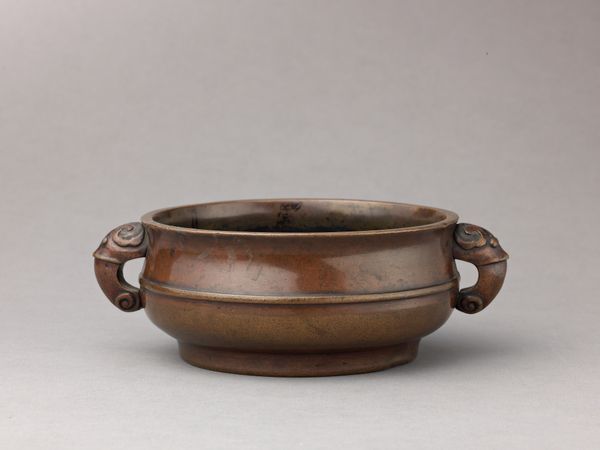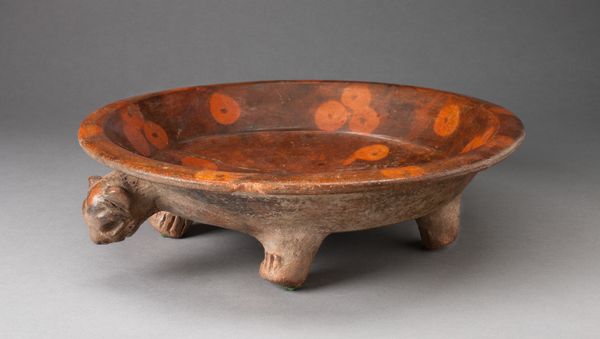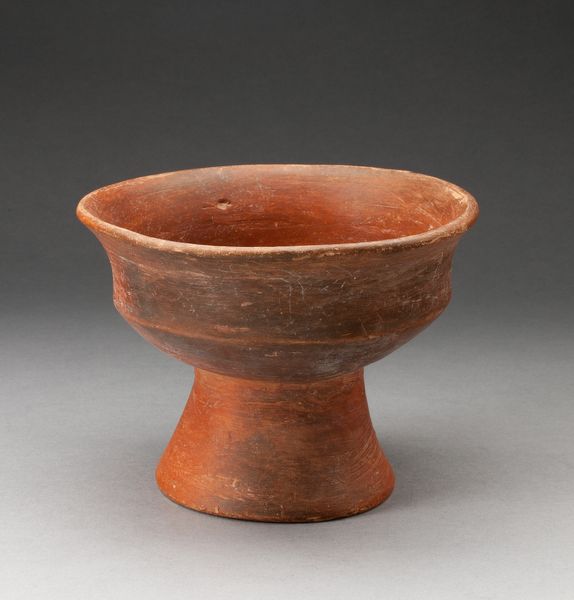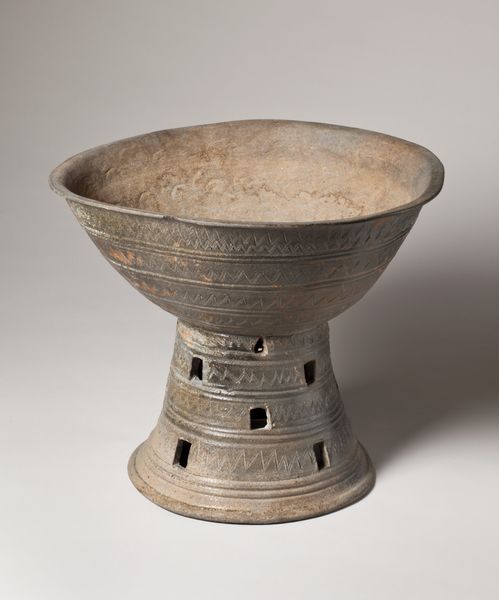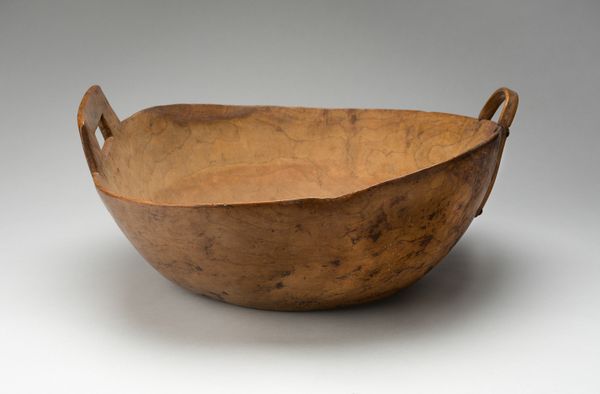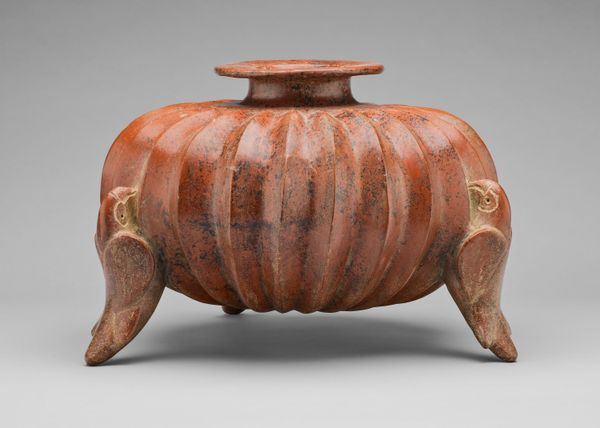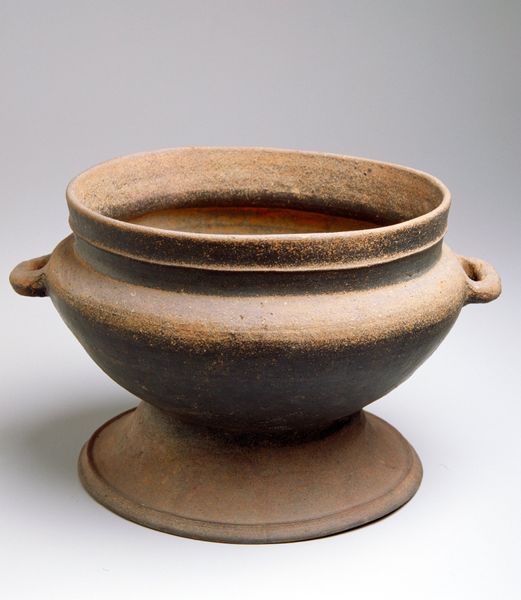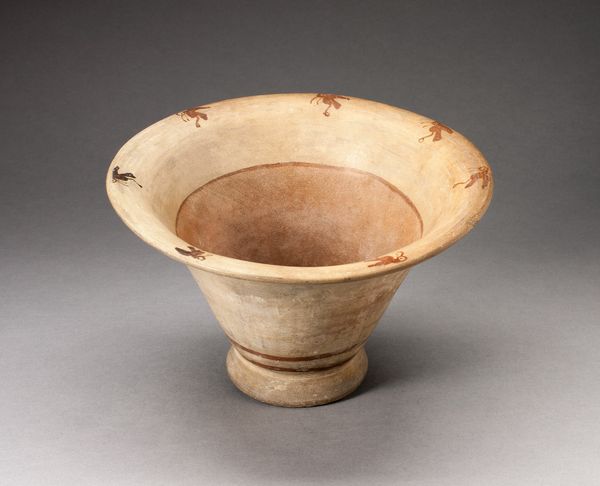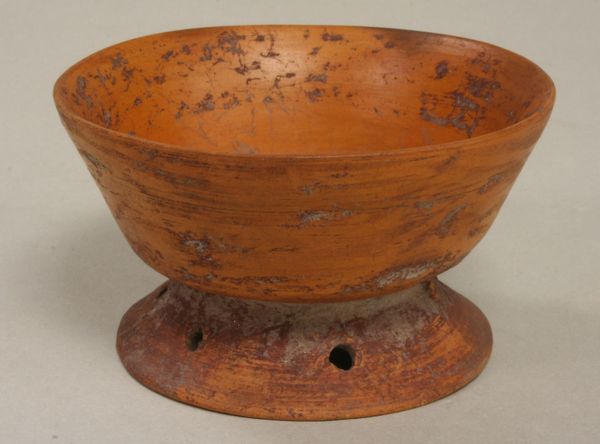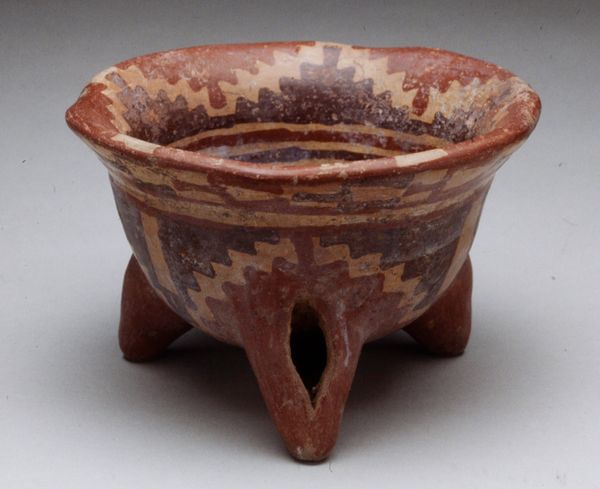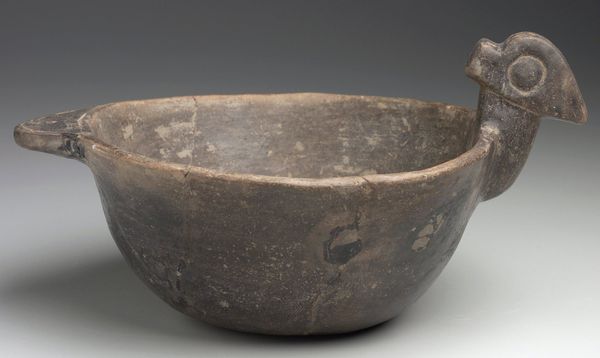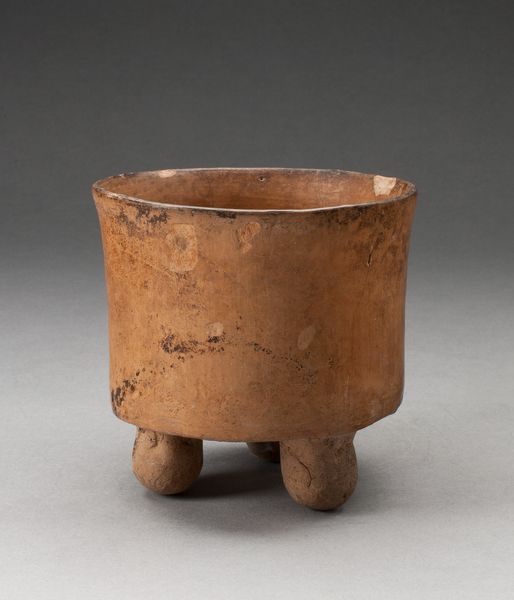
ceramic, earthenware
#
toned paper
#
water colours
#
ceramic
#
possibly oil pastel
#
oil painting
#
earthenware
#
stoneware
#
underpainting
#
watercolour bleed
#
earthenware
#
watercolour illustration
#
watercolor
Dimensions: 5 x 8 3/4 x 8 3/4 in. (12.7 x 22.2 x 22.23 cm)
Copyright: Public Domain
Curator: So, here we have an earthenware “Composite Tripod Vessel.” The precise origins of the piece are unknown. Editor: It looks so wonderfully elemental. That reddish-brown color just speaks of earth, and fire. I’m also getting an almost whimsical, childlike feeling. Do you think that's strange? Curator: Not at all. The simplistic form, combined with those quirky little protrusions on the sides—almost like stylized faces—does have a playful quality. We believe it served some ritualistic or utilitarian purpose. Imagine the hands that formed this, smoothing the clay, feeling the yielding earth transforming under their touch. It makes you wonder about the division of labor... Editor: Absolutely, because pottery is so incredibly human and connected to a daily purpose. This earthenware, this clay made functional! And let's talk about those legs... They aren’t just supports; they make it somehow levitate, transcend its material nature. And I just noticed that one has some cracks, almost like veins. Beautiful. I wonder if those imperfections were considered flaws? Curator: Perhaps. Or maybe they were seen as part of the vessel's unique character, proof of its journey through the kiln. After all, the social context is hard to see now, because so much is lost to time. But think about the labor involved in quarrying the clay, preparing it, forming the vessel, decorating it. This tells the history of materials as it moves through peoples lives. Editor: What about its size? I imagine it could hold… sustenance. A communal stew simmering over a fire, each serving imbued with stories passed down, whispered intentions. So how do we connect its utilitarian construction to whatever sacred significance it had? I feel that there are stories within those imperfections, like seeing a human truth of its origins through its materials. Curator: A potent combination of daily labor and symbolic value. I appreciate you calling it that because each of those layers adds depth. I mean, look closer, and you realize this humble vessel is much more than it appears. Editor: Absolutely, a grounding perspective—materials never lie.
Comments
No comments
Be the first to comment and join the conversation on the ultimate creative platform.
